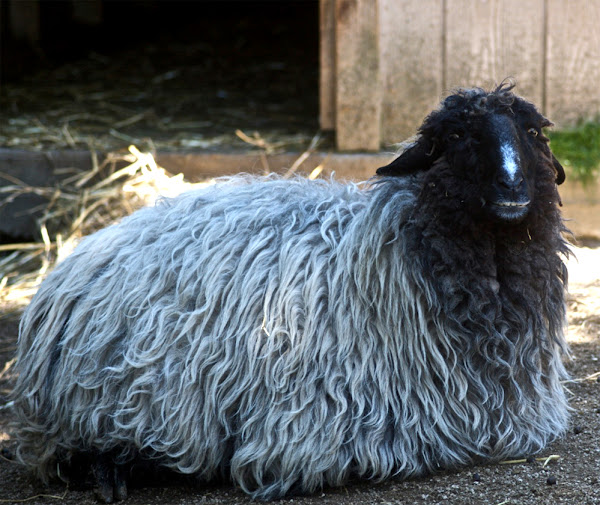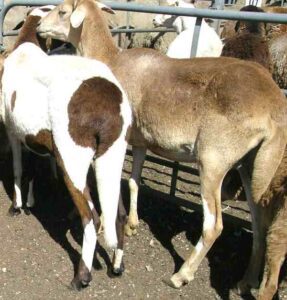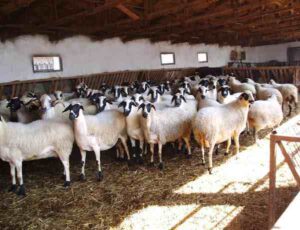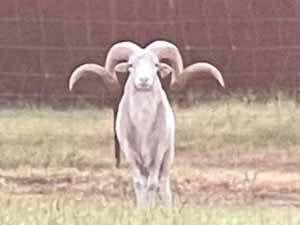The Karakul sheep is a multi-purpose breed of domestic sheep originated from Central Asia. According some archaeological evidence, this breed is being raised there continuously since 1400 BC.
And carvings of a distinct Karakul type have been found on ancient Babylonian temples. It is also known by some other names such as Qaraqul, Karagül (Turkey), Karakul’skaya (Russian), Astrakhan and Bukhara.
The breed is also raised in some other countries. It is raised in Namibia in large numbers, having first been brought there by German colonists in the early twentieth century.
The Karakul sheep is named after a village called Karakul which lies in the valley of the Amu Darja River in the former emirate of Bokhara, West Turkestan.
Between 1908 and 1929, the Karakul sheep were first introduced to the United States. And there has been an increased interest in these animals, with a growing interest in the fiber arts in the United States.
Today the breed is a multi-purpose animal, and raised for many different purposes. Such as they are used for meat, milk, hides and wool. Read more information about this breed below.
Karakul Sheep Characteristics
The Karakul sheep are medium-sized animals. They differ radically in conformation from many other sheep breeds, and they are of the fat broad tailed type of sheep.
There are stored fat in their large tail, which is a source of nourishment and similar in function to the camel’s hump. They usually stand tall, with a long and narrow body.
Their top line is highest at the loin with the rump long and sloping, blending into a low set broad tail. Head of the Karakul sheep is long and narrow, and slightly indented between the eyes and often exhibiting a Roman type nose.
They have long ears, which are always pointing downward and slightly forward and vary from a long U shape to small V shape (or also may be entirely absent).
They have long neck, which is carried semi-erect, and their legs are medium to long. The Karakul ewes are usually polled, while the rams can be either polled or horned.

These animals are easily characterized by their colored fleece, which is due to a dominate black gene.
As a medium-sized animal, average live body weight of the mature Karakul rams is between 79 and 102 kg. And average live body weight of the mature ewes vary from 45 to 68 kg. Photo and info from ansi.okstate.edu and Wikipedia.
Uses
The Karakul sheep are multi-purpose animals. They are used for meat, milk, wool and hides. But they were valued for their wool previously.
Special Notes
The Karakul sheep are very hardy animals, and they are able to thrive under adverse conditions. They are resistant to internal parasites and foot rot disease.
They are excellent foragers, and often go through a season of scant food or graze marginal land in which ordinary sheep would not able to survive.
They can withstand extremes of either cold or hot, but they should have access to dry cover and be kept out of marshy pastures.
The Karakul sheep actually breed out of season, and they are able to produce 3 lamb in 2 years. Single lambs are the rule for these animals. But twins are also born occasionally.
The Karakul ewes are very attentive and protective mothers, resulting a high lamb survival rate. The breed is also posses a strong flocking instinct. And they can be run either in fenced pastures or on open range.
Today the Karakul sheep are raised as a multi-purpose animal. They are kept for meat, milk, wool and hides. However, review full breed profile of the Karakul sheep in the following chart.
| Breed Name | Karakul |
| Other Name | Also known by some other names such as Qaraqul, Karagül (Turkey), Karakul’skaya (Russian), Astrakhan and Bukhara. |
| Breed Purpose | Meat, milk, wool and hides |
| Special Notes | Very hardy and strong animals, able to thrive under adverse conditions, resistant to internal parasites and foot rot disease, excellent foragers, and withstand extremes of either cold or hot, they actually bred out of season, able to produce 3 lambs in 2 years, the ewes are very attentive and protective mothers, high lamb survival rate, they posses a strong flocking instinct, used for meat, milk, wool and hides |
| Breed Size | Medium |
| Weight | Mature ewes body weight vary from 45 to 68 kg. And the mature rams on average weight between 79 and 102 kg. |
| Horns | Rams have horns, but the ewes are naturally polled |
| Climate Tolerance | Almost all climates |
| Color | Many |
| Rarity | Common |
| Country/Place of Origin | Central Asia |






